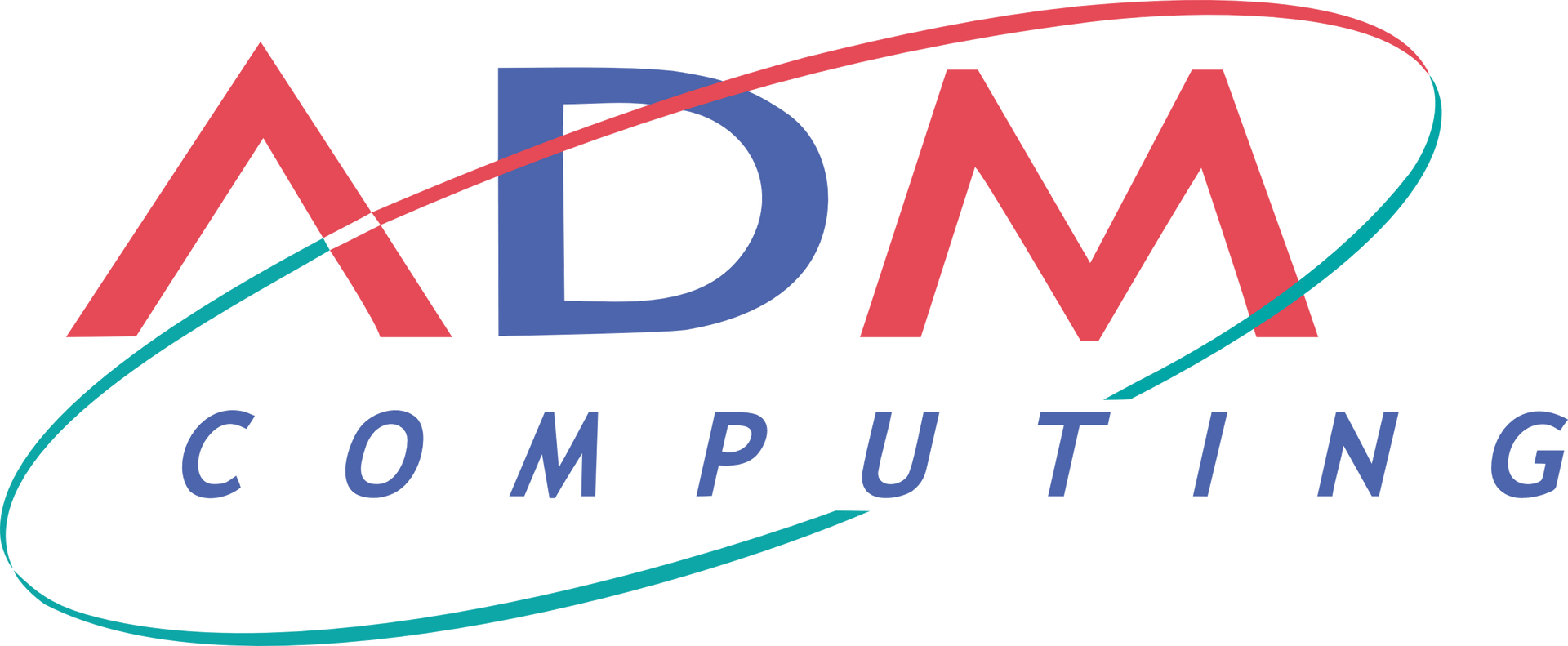ADM Computing - Interview with Kailas Bryant -
AI - The Future - Microsoft Copilot

AI in Action: How Businesses Are Really Using Microsoft Copilot
An interview with Kailas Bryant, AI Enthusiast and Director at ADM Computing conducted by Liu Batchelor.
Let's start simple – what exactly is Microsoft Copilot, and why is it getting so much attention right now?
"Microsoft Copilot is essentially your AI-powered assistant built right into the tools your teams already use daily – Word, Excel, Outlook, Teams, PowerPoint, OneNote, and more. It's not about replacing people or pushing a futuristic agenda. It's about helping real businesses save time, reduce admin, and boost productivity by letting AI handle the heavy lifting on everyday tasks.
What's more, Microsoft is clearly committed to making this platform best in class. They've done it time and time again, and with their expertise and resources, there's no doubt they'll continue to invest heavily. At the time of writing, there are 209 Copilot features in development, 36 currently being rolled out, and 129 already live – which gives a real sense of the pace and scale they're working at."
Is Copilot just another trend, or is it genuinely useful for businesses that are just starting out with AI?
It's definitely more than a trend. For most businesses, early-stage adoption is where the real value is. You don't need to overhaul your systems or hire a team of data scientists to benefit. Copilot integrates into what you already use – so it's a low-risk, high-reward entry point into AI.
What makes it especially accessible is that it doesn't require any development to get started. There's no need to build anything custom – you simply enable it, and off you go. We're seeing companies use it to accelerate work rather than reinvent it. That's what makes it such a good first step: it fits into your current workflows, doesn't require technical expertise, and the return on effort is immediate.
What are some of the early use cases you've seen that really highlight Copilot's potential?
Marketing teams are using it to aid content generation – whether that's blogs, LinkedIn posts, product descriptions, or even brainstorming visual ideas. It's like having a second opinion or a creative partner on tap, which is especially helpful for smaller teams who need to do more with less. Copilot gives them a springboard so they're not starting from a blank page, but they still keep full creative control.
In HR, it's handling things like meeting minutes, drafting internal communications, and simplifying admin-heavy processes. Managers are using it live during meetings to summarise discussions and suggest next steps – saving time while improving follow-through.
Project managers are tapping into Copilot to surface insights from Teams chats and email threads, highlight decisions, and even prompt discussion points in real time. It helps keep momentum without getting buried in admin.
And for admin teams working in Excel, it's making the platform more approachable. You can ask natural language questions like "what are the outliers in this data?" or "can you build me a monthly summary?", and it will do the legwork. It doesn't reinvent Excel, but it does make its more advanced features easier for the average user to access.
Personally, I use AI every day – both at work and at home. Professionally, it helps me double-check details, research unfamiliar topics, and simplify time-consuming tasks. Outside of work, I use it for everything from planning DIY jobs around the house or comparing household purchases, to structuring workouts, building better eating habits, and even putting together personal learning plans. It's not just a workplace tool – it's a really practical, adaptable support system in everyday life too.
How important is staff training when rolling something like Copilot out across a business?
Training is absolutely critical – but it doesn't have to be complex. The key is helping people understand how to prompt Copilot effectively and where to apply it in their role. It's like hiring a new assistant – if you don't tell it what to do or how you like things done, you won't get the best results.
We recently ran internal Copilot enablement sessions where we brought key people from different teams into a room and showcased real use cases tailored to their roles. That format worked brilliantly – it sparked conversations, challenged assumptions, and led to a real sense of enthusiasm around its potential. It helped people see the "so what" in a very practical way.
We also regularly host free Copilot events that are open to businesses of all sizes. It's a great way for people to get hands-on, ask questions, and start imagining how it could help their own teams. And for organisations looking to go deeper, we offer comprehensive rollout programmes – covering everything from training and adoption to security, governance, and compliance.
Ultimately, the more confident your people are, the more value you'll get from the platform – and that starts with giving them the time and space to explore it properly.
What makes Copilot different from other AI tools out there?
One of its biggest strengths is its integration. Copilot isn't a standalone tool you have to learn from scratch – it's built right into the Microsoft 365 ecosystem that most businesses are already using. That's what makes it such a low barrier to entry. If your teams are already in Word, Excel, Outlook or Teams every day, why not start using those tools more effectively with the help of AI?
What really sets it apart is how it understands context across that entire environment. So if you ask it to draft something based on a Word doc, your OneNote notes, and a Teams conversation, it can draw from all of those sources and pull everything together coherently.
It can also adapt – tweak the tone, adjust the length, or mirror how you've structured things in the past. Over time, it starts to reflect your voice, which is incredibly useful for maintaining consistency and branding across documents and departments.
And because it's developed by Microsoft, it will always be the most native, best-aligned AI experience for traditional 365 workflows. Microsoft has a long track record of continually refining and improving its tools, and Copilot is no exception – it's designed to evolve alongside the workplace and remain best in class within that familiar environment.
Beyond Microsoft 365 – what's happening with Azure Copilot and SharePoint?
That's where things get even more exciting. Azure Copilot lets you build out more specialised, role-based agents. For example, you could train a bot purely on staff benefits documentation. It means when a team member has a question, the AI can respond accurately and within scope – without pulling in unrelated data.
On the SharePoint side, Microsoft recently rolled out functionality that makes AI searchable across folder structures. So, imagine a SharePoint library filled with company policies and procedures. Instead of manually digging through folders, you can just ask, "What's the policy on remote working?" and Copilot will find it instantly. It's a massive time saver.
What advice would you give to a business that's keen to start using Copilot but isn't sure where to begin?
Start small, start specific. Pick a single department or task where you know people are spending a lot of time – like summarising meetings, writing reports, or chasing updates – and see how Copilot can help lighten the load.
Listen to feedback, refine how people prompt it, and build from there. You don't need to roll it out all at once. The businesses seeing the most success are using it to augment their teams, not replace them – helping people do more of the work they're great at by removing some of the friction.
If you're unsure where to start, it's well worth speaking to your IT provider – or feel free to reach out to us at ADM. We run regular Copilot overview events that are free to attend, and designed to help businesses of all sizes understand where AI can add value. Whether you're exploring the idea or ready to roll it out, a bit of expert guidance can make all the difference.
Final thoughts – where do you see this all heading?
I think we're moving toward AI being seen less as a novelty and more as a standard layer of productivity – something as everyday as email or cloud storage. Tools like Copilot are showing us that AI doesn't have to be complex to be incredibly useful. It should feel like a natural extension of your team – helping you work smarter, write better, and find what you need faster.
What's really exciting is how AI is beginning to interface more seamlessly with the tools we already use. As these systems become more connected and context-aware, they'll unlock even greater efficiency – whether that's suggesting next steps, summarising conversations, or proactively surfacing useful resources. And with the shift toward more conversational, even verbal, input – we're getting closer to a "Jarvis-style" experience where interacting with your tools feels effortless and human.
The more integrated these technologies become, the more they'll empower individuals to get more done with less friction. And if you're not already using AI at work or at home – I'd genuinely encourage you to give it a go. Any question you'd normally Google? Try asking an AI like Copilot or ChatGPT instead. You might be surprised just how helpful it can be.
When implemented with care, training, and a clear purpose, the payoff is real – not just in time saved, but in building confidence, creativity, and consistency across your business and your life.
Thank You Kailas Bryant
ADM Computing Contact Details
Telephone: 01227 473513
E-mail: sales@adm-computing.co.uk
Website: 24/7 IT Support | 99.8% Positive Feedback | Kent | London
https://www.adm-computing.co.uk/



